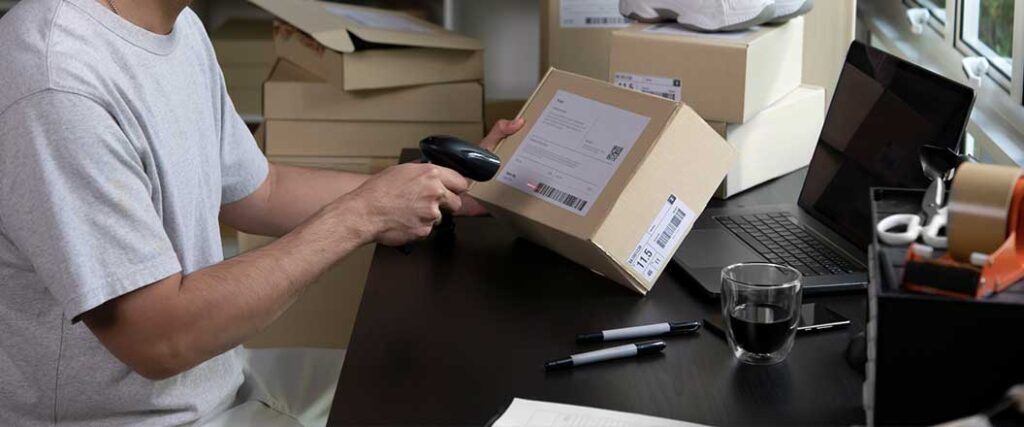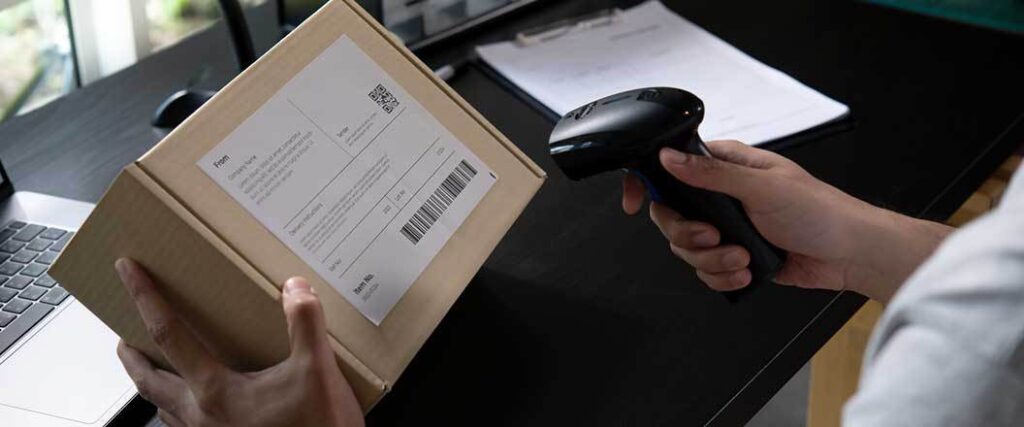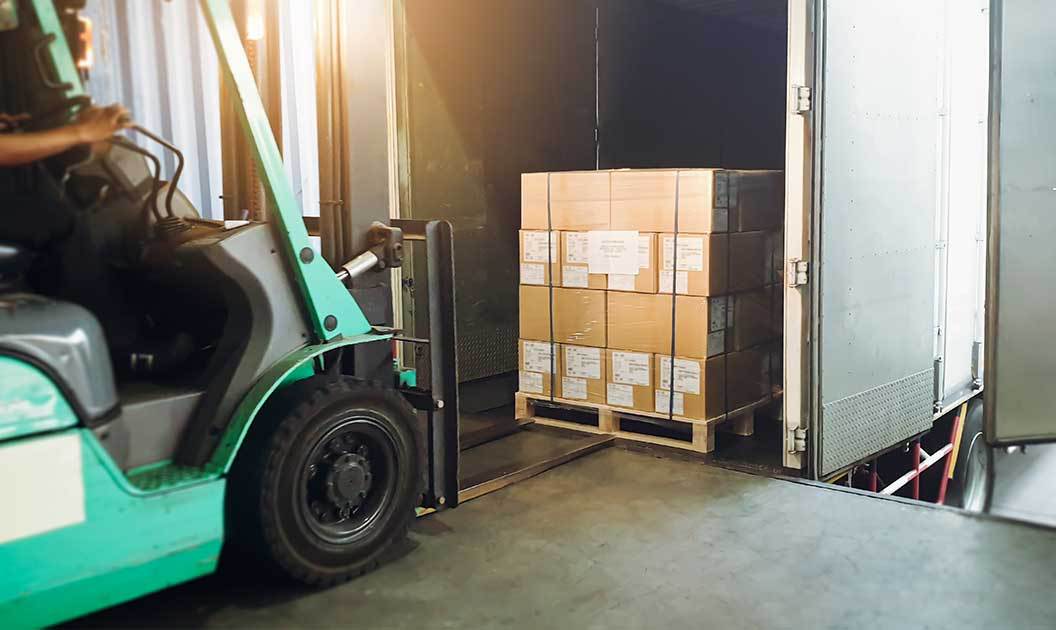Cross docking vs drop shipping are two essential fulfillment services that are in constant demand. However, many new participants in the transportation industry have a tough time discerning which service they need. Therefore, it helps to understand the differences and similarities between cross docking and drop shipping.
Cross docking eliminates the need for warehouse space by immediately unloading freight from one form of transportation and placing it on an outbound truck. Drop shipping is great for retail businesses that don’t keep their products in the store. Instead, they provide shipping information to their supplier who handles the rest.
Cross docking and drop shipping have many facets that are important for anyone involved in the supply chain to understand.

What is Cross Docking?
Cross docking removes the need for storing freight. Rather than putting unloaded freight into a warehouse for long-term storage, cross docking immediately places that freight into an outbound truck.
There are a few different reasons why cross docking is so beneficial. There are two different types of cross docking that give customers better flexibility by fulfilling their specific needs.
Pre Distribution Cross Docking
Pre-distribution cross docking is used when the final destination of the shipped products is already determined. When the freight arrives it will be unloaded and placed into the next outbound truck going to the destination of the products.
Freight will spend a very short amount of time in a warehouse when pre-distribution cross docking is used.
Post Distribution Cross Docking
Post-distribution cross docking delays sorting and loading freight into an outbound trailer for a short time. This allows the retailer or distributor that’s using the cross docking services to have time to determine the final destination of their freight.
While freight will spend a longer amount of time in the warehouse when using post-distribution cross docking, freight won’t stay in the warehouse any longer than one day.
Cross Docking Advantages
So many retailers, distributors and shippers utilize cross docking services because of the different benefits of doing so. Down below, we’ve listed some of the more popular reasons for cross docking.
Saves Time
Retailers and distributors have a responsibility to get their goods to their customers as fast as possible. Cross docking is a great solution because it saves a lot of time for these individuals.
Since freight is immediately unloaded and loaded into an outbound trailer, freight won’t be sitting around in a warehouse for long periods. When freight is unloaded, it simply has to be accounted for and put into the right trailer(s).
The process of unloading and loading freight takes less time to complete than putting freight information into an inventory management system for storage.
Reduced Costs
Fulfillment warehouses only have so much storage space for freight. When you choose to store freight in a warehouse, you’re also paying for all of the warehouse management processes that go into finding a safe place to store your products. Cross docking removes the need for storage space which means you won’t have to spend money on all of these services.
Less Risk to Product
Retailers and distributors don’t want their product quality to suffer during the transportation process. Unfortunately, the more times freight is handled, the more of an opportunity there is for it to sustain damage.
Here are all the times your freight could be handled when cross docking isn’t used:
- During Unloading
- Being stored in the warehouse
- Being retrieved from the warehouse to be loaded again
- During loading into an outbound trailer
- Being unloaded at its destination
- Being unloaded at another warehouse where storage is needed and the process repeats
Performing all of these tasks involves handling your freight which increases the possibility of something going wrong. Cross docking reduces the number of times your freight is handled since this process only requires unloading and loading your freight from one trailer to the next.
Great For Shipping Perishable Goods
It takes time for freight to travel through each part of the supply chain. When it comes to shipping perishable goods, time is not a luxury that distributors can afford.
Supermarkets and grocery stores must get their perishable goods well before their expiration date. The speed that cross docking allows ensures that a distributor's perishable freight won’t be sitting in a warehouse too long.
If you're still unconvinced that cross docking can help you, go on over to our article on the benefits of cross docking. On that page, you will find more reasons why cross docking is the fulfillment service you’ve been searching for.
What To Expect When Using Cross Docking
Despite the convenience of cross docking services, there are some important responsibilities that you will have to complete. For one, the fulfillment warehouse will need to know where your freight is going.
That way, the fulfillment provider can have an outbound truck ready to take the freight to its final destination. You will need to notify your fulfillment provider if your shipment has to be consolidated so they can have multiple trucks ready for the different destinations your freight will travel to.

What is Drop Shipping?
Drop shipping is a fulfillment method that many small businesses use. Businesses that are selling online products don’t keep the inventory in-store. When a customer orders a product, the business will notify their supplier who is responsible for getting it to the customer.
Drop shipping allows businesses to act as the middleman between the customer and supplier of the goods. The way drop shippers make money is by charging slightly more for a supplier's product.
After a customer buys a product, the drop shipper provides the customer’s information to the supplier and pays them to send the product. The drop shipper will make a profit off the money that’s left over. The table below demonstrates how this process works.
How Drop Shippers Get Paid
| Supplier’s Price for A Certain Product | Drop Shipper’s Price | Commission Kept by Drop Shipper |
| $300 | $400 | $100 |
As with cross docking, there are a few different types of drop shipping.
Product Reselling
The way product reselling works is that businesses will find different types of products from various sources. Many of the products that these businesses offer for purchase are hard for customers to find anywhere else.
In addition to offering a variety of products, businesses that use product reselling as their form of drop shipping also give in-depth reviews of the products they’re offering. For this reason, drop shipping businesses like these are very appealing to customers.
Business Extension Dropshipping
Some drop shippers choose to work alongside retailers and serve as their online presence for their products. Anytime an order is made, the drop shipper notifies the retailer so they send the shipment. The drop shipper makes a percentage of the profit.
Print On Demand (POD) Drop Shipping
POD drop shipping is used by businesses that have suppliers who will allow them to print words or designs onto their products. This is very similar to product reselling except customers can choose what words or designs they want on the product. The chosen design is printed on the product after purchase and then shipped to the customer.
Drop Shipping Advantages
Drop shipping is a fulfillment method that more and more new and small businesses are starting to use. The reason for this shift to drop shipping is because of all the different advantages that come with utilizing this service.
Simple To Start-up
One reason drop shipping has grown in such popularity is because of how easy it is to do. Drop shipping is a service that requires very little amount of work on the part of the business that uses it.
For example, some of the things that a drop shipping business doesn’t have to worry about when they use drop shipping are:
- Warehouse management
- Shipping products
- Packing products
- Tracking the inventory for accounting purposes
- Completing any necessary paperwork
Doesn’t Require Large Sums of Money
A drop shipping fulfillment business costs little to no money to start. You only have to purchase the products that your store offers once you’ve made a sale. Since you won’t be buying any of the goods your store offers upfront, you won’t have to worry about buying too many products that might not end up selling.
Can Be Run Anywhere
Thanks to the flexibility of drop shipping paired with modern technology, running a drop shipping business. Armed with something as simple as a laptop, you can conduct business operations from anywhere you choose.
What To Expect When Using Drop Shipping Services
As a drop shipper, there are tasks that you will also be responsible for completing. For one, you will have to be your business's customer service representative. Handling questions from customers or explaining why their order was late or hasn’t arrived will be your responsibility.
Starting a drop shipping business also requires tedious preparation such as:
- Marketing
- Branding
- Formulating a business structure
- Finding a reliable supplier
Lastly, expect a lot of competition when you start drop shipping. The cheap start-up costs make drop shipping so easy and appealing to aspiring business owners. That’s why so many choose to start a drop shipping business which in turn creates more competition that will be doing the same thing that you are.

Cross Docking vs Drop Shipping: What’s the Difference?
Cross docking and drop shipping each share differences and similarities. While one service isn’t necessarily better than the other, each one can be beneficial depending on the user's situation.
Similarities
One similarity that these fulfillment services share is that they remove storage costs from the shipping process. In cross docking, freight is unloaded quickly into an outbound trailer. Even with post-distribution, cross docking freight will only sit on the dock until there is a trailer for it to be loaded into.
In the case of drop shipping, distributors don’t have to worry about storing their goods at all. Instead, their supplier takes care of all the shipping responsibilities for them. Each of these fulfillment services also saves money for the distributors and retailers.
Differences
Cross docking and drop shipping have their differences as well. For example, cross docking gives retailers and distributors more control over the product quality than drop shipping does.
That is because retailers and distributors that use cross docking will be responsible for:
- Inspecting their shipment
- Packaging
- Palletizing
- Make sure their shipment has goods that can be transported
While responsibilities like these will create more work for retailers and distributors, it gives them the power to ensure that their goods will arrive at their destination safely.
Retailers that use drop shipping have no control over these factors. Drop shippers have to rely on their suppliers to attend to the shipping process and hope they complete the process correctly.
Cross docking and drop shipping can indeed bypass storage for retailers and distributors. That said, drop shipping retailers might not have a warehouse to store their goods in. The supplier who ships the products might choose to use a warehouse.
The delivery time for freight is much more consistent using cross docking because you always have the guarantee that your freight will spend no more than a day at the warehouse. Delivery time is less consistent for drop shipping services.
The reason for this discrepancy is once again due to drop shipping retailers leaving the transportation details in the hands of the supplier. Therefore, suppliers can choose whatever fulfillment options they want which can result in some shipments arriving faster than others.
Which One Should I Choose?
The fulfillment service you should choose is the one that makes the most sense for you. If you’re just starting your online retail store, then drop shipping is likely the best way to go. New businesses can be hard to start and drop shipping makes it easier.
If you’re running a business that has steady growth and is more established, then cross docking is the option to go with. Cross docking will give these businesses better inventory control rather than leaving it up to their supplier.
Should you still find yourself unsure of which option to choose, consider getting our professional advice. Contact us and explain your current situation and we can help guide you to the service that will help you the most.
What to Expect When You Use Transload Services USA
Transload Services USA, powered by R+L Global Logistics, provides support tailored to the needs of our customers. One of the perks of using R+L Global Logistics as your fulfillment partner is that you will be assigned your customer service representative.
Customer service representatives are constantly communicating with personnel in the supply chain so they can keep you updated with information involving your shipment. Additionally, our services are available at any hour. These services include:
Navigate to our contact page or call us at (352) 282-4588 to get in touch with one of our representatives or start filling out your quote.

